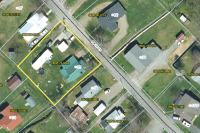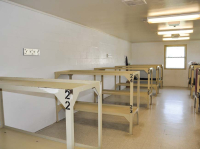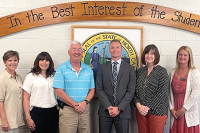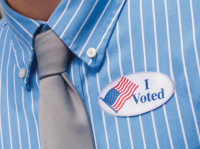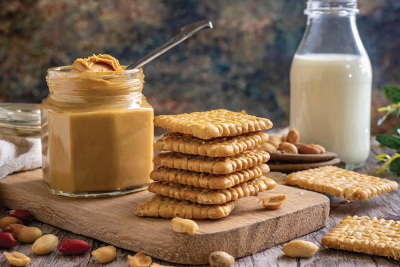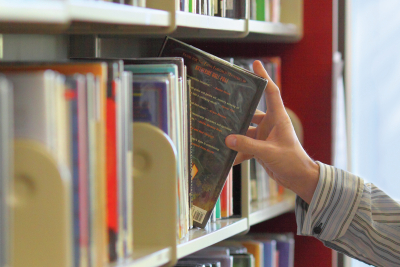World Methodist leader overcomes adversity in his life path to Junaluska
 Ivan Abrahams didn’t come to hold the top spot in the World Methodist Council because he abided by the rules. At more than one point in his spiritual career, he was a bit of a thorn in the clergy’s side.
Ivan Abrahams didn’t come to hold the top spot in the World Methodist Council because he abided by the rules. At more than one point in his spiritual career, he was a bit of a thorn in the clergy’s side.
But his commitment to the scriptures and unwavering belief in equality carried him on his path from a boy of mixed race on the sandy plains of apartheid South Africa to the spiritual leader of one of the world’s largest churches — claiming 80 million or so members globally.
Abrahams is the first person of color to hold the high-ranking post, tasked with working as a mediator and unifier between the 75 or so Methodist denominations located in 132 countries across the globe.
These days, however, home for Abrahams is Lake Junaluska, where the World Methodist Council has had its headquarters since the 1950s. When Abrahams was named general secretary by a vote of the worldwide Methodist representatives, the job meant moving from his home in South Africa to take up temporary residence at Lake Junaluska. Now he can be found, along with his wife, walking amongst the flocks of geese along the shores of the lake — when he is not traveling to New York or Africa that is.
Despite the obvious culture shock, Abrahams has found Lake Junaluska “a place of beauty and hospitality.”
Related Items
But once considered a second-class citizen even in his own country, it wasn’t an easy journey to rise to his prominent post. Abrahams is living example of what it means to believe, even when the religious, political and social powers are working against you.
“It is being a prisoner of hope that brings me to Lake Junaluska,” Abrahams said. “It is a hope that a different world is possible.”
It’s quite easy for Abrahams to trace back to one of the first times he recognized his own church was wrong and did something about it.
While studying at an all-black seminary school in South Africa in 1977, he and two other students decided to take a trip. During the night, they packed up their belongings and drove more than 500 miles to the all-white seminary at Rhodes University in Grahamstown, South Arica, along the southern cape.
They settled in, and the next morning were spotted quite easily at the white institution.
“When they woke up, they found us there,” Abrahams said. “We were not welcomed at all.”
The church leadership threatened the group of students with disciplinary action and accused of them of trying to embarrass the organization. Nevertheless, Abrahams said their act of defiance was the impetus that eventually brought about the integration of seminary education.
“We wanted to push the boundaries,” Abrahams said. “That is born out of my own conviction and reading of the Bible that apartheid is an abomination and a heresy and against everything that the scriptures stood for.”
But his struggles for racial equality in South Africa and the Methodist church did not stop there.
Abrahams, who was born in 1956 and lived under the cloud of apartheid until it was abolished in 1994, described it as “the fabric of daily life.” Every facet of society in the race-divided country was segregated, from drinking fountains to beaches to the education system, and the Methodist church was no exception. Blacks attended black churches while whites typically attended white churches. If a church was of a mixed congregation, it wasn’t uncommon for people of color to sit in the back and whites in the front.
One of the rare instances when blacks and whites intermingled within the Methodist church was during conferences of the organization’s higher-ups.
In terms of race, Abrahams is technically somewhere in the middle. His paternal side of the family traces its roots to Russia, where his great-great-grandfather fled from the czar before settling in South Africa and marrying an aboriginal woman. His maternal side came to the region with the Dutch East India Company in the mid-1600s.
Abrahams father, a painter, who was also of mixed heritage, could have passed for white but chose to be black. Abrahams, himself, didn’t have a choice because his wiry hair failed the so-called “pencil test.”
The test was used to separate people of mixed heritage from whites. The test went like this: stick a pencil in a person’s hair and if it falls out the person is white; if it stays, the person is colored.
“Some of my family were considered white because they passed the pencil test,” Abrahams said. “Others were considered black.”
Yet, Abrahams’ fairer skin allowed him to bridge the racial gap and identify with both sides of the split South Africa.
After graduating from seminary school, Abrahams was assigned as pastor to a church along the north Indian Ocean coast near Durban with a well-to-do congregation that was majority white. He said it was part of his punishment for pushing the boundaries as a student.
There, he felt the sword of Damocles hanging over his head with the threat that he toe the line and behave.
Regardless, that didn’t stop him from routinely inviting the small contingent of colored parishioners to seat themselves in the front, typically reserved for the whites.
It wasn’t long before he took a post, which paid half the wages, with a poor black congregation in the cape flats, a sandy wasteland where many colored citizens had been relocated in settlements.
“I felt I needed to be there in the trenches and supporting folks who mattered most,” Abrahams said.
His appointment was nearly blocked by a court order. Because of his ongoing involvement with an anti-apartheid group of religious and civic leaders, United Democratic Front, Abrahams had been labeled by the government as an “undesirable element.”
Nevertheless, he was able to overcome the sanction, and, in the end, the government label he had earned helped attract scores of people to his sermons to hear him speak.
From there, he began his ascension within the church. In 1992, at the age of 37, he was selected as the bishop to Namibia, a neighboring country to South Africa, making him the youngest appointed bishop in the church.
He speculated the church sent him to Namibia, a country that had flung the chains of its own colonial ruler in 1989, to learn about rebuilding after social upheaval. In essence, the position prepared him for the anticipated overturn of apartheid in South Africa so that he might better serve the church upon his return.
While holding that position in Namibia, Abrahams saw the apartheid regime tumble in his home country. It was a momentous occasion that caused him to look back over years of struggle he experienced firsthand and breathe a momentary sigh of relief.
“There was a kind of mantra or chant we used to say: ‘Freedom in our lifetime,’” Abrahams said. “I hung on to that. I believed it passionately.”
Later, Abrahams became the director of missions for the Methodist Church of Southern Africa — a transnational organization representing six African countries and 2.2 million members. Then, in 2003, he rose to the rank of presiding bishop, the highest rank in the organization.
As with most social change, the victories are often fleeting, and there’s always more to be done. Abrahams believes the footprint of apartheid is still noticeable in the Methodist churches across South Africa, and other forms of injustice and discrimination still permeate Methodist churches in every corner of the globe. He said he’d like to work toward greater inclusion of persons with handicaps, the poor, women and youth in the Methodist church. He also wants to advocate for the rights of people with HIV and AIDS.
From his desk in Lake Junaluska, Abrahams has already noticed a glaring difference between the United Methodist Church, the denomination that predominates in the United States, and the Methodist churches in South Africa. Although both are part of the same worldwide Methodist association, in the United States homosexuality is considered at odds with the religion, and in South Africa, it is accepted.
“What a person’s sexual preference is, is up to them,” Abrahams said. “I believe passionately that the church needs to be an inclusive organization.”
However, Abrahams also said he respects the local doctrine and knows from experience that change within society, and within the Methodist church, can take time to materialize. Furthermore, Abrahams’ role is not one that allows him to make changes at the drop of a hat. The World Methodist Council is more like a United Nations of the various denominations worldwide, with Abrahams as the secretary general.
Although he assumes that when the church’s leadership voted him into his current position, it was a vote for inclusivity and progress for the Methodists, he also understands the challenges. But during his five-year term as spiritual leader he hopes he can at least point the ship in the right direction.
“My metaphor for the church is that it is like a super tanker,” Abrahams said. “It takes such a long time to turn it about.”





